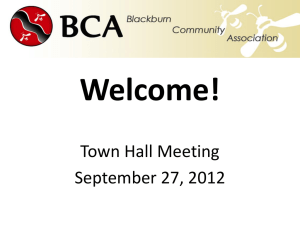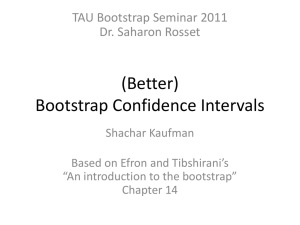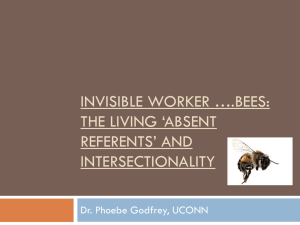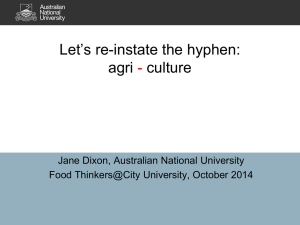Work Plan - bicopoll-net
advertisement
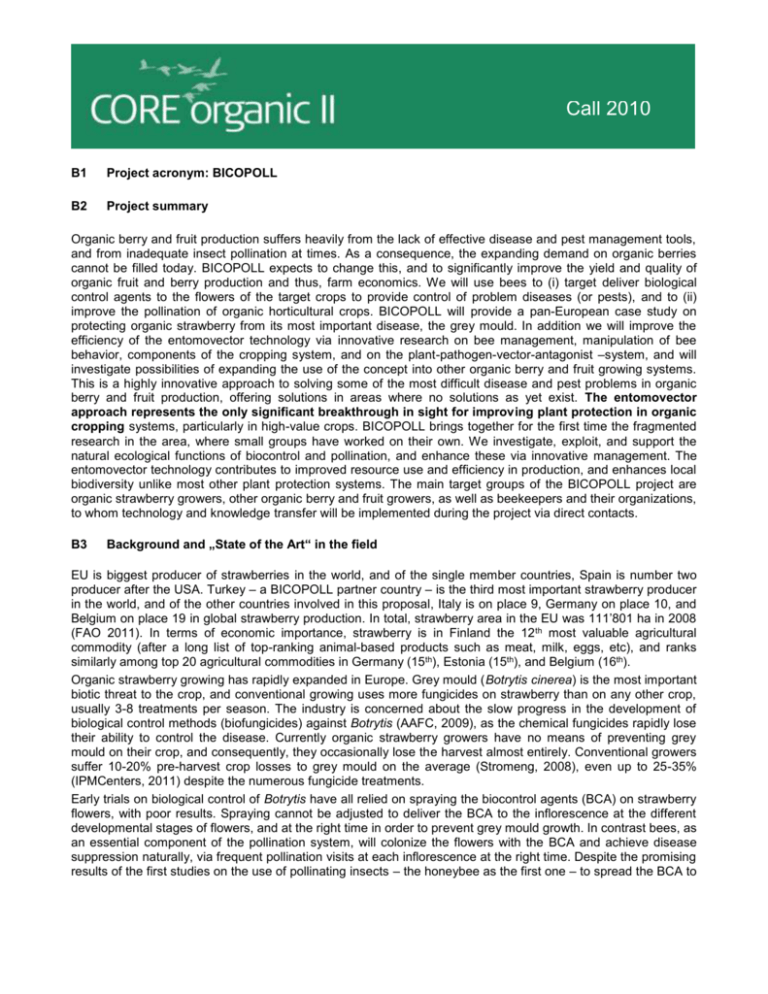
Call 2010 B1 Project acronym: BICOPOLL B2 Project summary Organic berry and fruit production suffers heavily from the lack of effective disease and pest management tools, and from inadequate insect pollination at times. As a consequence, the expanding demand on organic berries cannot be filled today. BICOPOLL expects to change this, and to significantly improve the yield and quality of organic fruit and berry production and thus, farm economics. We will use bees to (i) target deliver biological control agents to the flowers of the target crops to provide control of problem diseases (or pests), and to (ii) improve the pollination of organic horticultural crops. BICOPOLL will provide a pan-European case study on protecting organic strawberry from its most important disease, the grey mould. In addition we will improve the efficiency of the entomovector technology via innovative research on bee management, manipulation of bee behavior, components of the cropping system, and on the plant-pathogen-vector-antagonist –system, and will investigate possibilities of expanding the use of the concept into other organic berry and fruit growing systems. This is a highly innovative approach to solving some of the most difficult disease and pest problems in organic berry and fruit production, offering solutions in areas where no solutions as yet exist. The entomovector approach represents the only significant breakthrough in sight for improving plant protection in organic cropping systems, particularly in high-value crops. BICOPOLL brings together for the first time the fragmented research in the area, where small groups have worked on their own. We investigate, exploit, and support the natural ecological functions of biocontrol and pollination, and enhance these via innovative management. The entomovector technology contributes to improved resource use and efficiency in production, and enhances local biodiversity unlike most other plant protection systems. The main target groups of the BICOPOLL project are organic strawberry growers, other organic berry and fruit growers, as well as beekeepers and their organizations, to whom technology and knowledge transfer will be implemented during the project via direct contacts. B3 Background and „State of the Art“ in the field EU is biggest producer of strawberries in the world, and of the single member countries, Spain is number two producer after the USA. Turkey – a BICOPOLL partner country – is the third most important strawberry producer in the world, and of the other countries involved in this proposal, Italy is on place 9, Germany on place 10, and Belgium on place 19 in global strawberry production. In total, strawberry area in the EU was 111’801 ha in 2008 (FAO 2011). In terms of economic importance, strawberry is in Finland the 12 th most valuable agricultural commodity (after a long list of top-ranking animal-based products such as meat, milk, eggs, etc), and ranks similarly among top 20 agricultural commodities in Germany (15th), Estonia (15th), and Belgium (16th). Organic strawberry growing has rapidly expanded in Europe. Grey mould (Botrytis cinerea) is the most important biotic threat to the crop, and conventional growing uses more fungicides on strawberry than on any other crop, usually 3-8 treatments per season. The industry is concerned about the slow progress in the development of biological control methods (biofungicides) against Botrytis (AAFC, 2009), as the chemical fungicides rapidly lose their ability to control the disease. Currently organic strawberry growers have no means of preventing grey mould on their crop, and consequently, they occasionally lose the harvest almost entirely. Conventional growers suffer 10-20% pre-harvest crop losses to grey mould on the average (Stromeng, 2008), even up to 25-35% (IPMCenters, 2011) despite the numerous fungicide treatments. Early trials on biological control of Botrytis have all relied on spraying the biocontrol agents (BCA) on strawberry flowers, with poor results. Spraying cannot be adjusted to deliver the BCA to the inflorescence at the different developmental stages of flowers, and at the right time in order to prevent grey mould growth. In contrast bees, as an essential component of the pollination system, will colonize the flowers with the BCA and achieve disease suppression naturally, via frequent pollination visits at each inflorescence at the right time. Despite the promising results of the first studies on the use of pollinating insects – the honeybee as the first one – to spread the BCA to Call 2010 the flowers instead of spraying (Peng et al., 1992), the development of this approach has not progressed far. The dispensers may not have been adequate, or the BCA has not functioned (e.g., Stromeng, 2008). Recently a more systematic development of the ‘entomovector technology’ (Hokkanen & Menzler-Hokkanen, 2007) has taken place, with focus on developing the component technologies such as the dispensers and carrier substances (see Mommaerts et al. 2011a). With functioning dispensers and improved, new BCA available, excellent results have been obtained (Hokkanen et al., 2011). Carrier materials must be selected with respect to BCA stability (Hjeljord et al., 2000) and vector safety (Israel and Boland, 1993; Pettis et al., 2004). Early studies used pollen as BCA carrier substance (Thomson et al., 1992), then polystyrene beads which were shown efficient but expensive (Butt et al., 1998), and recently corn meal (Peng et al., 1992), corn flour (Al-mazra’awi et al., 2006), bentonite (Kevan et al. 2008), and corn starch (Maizena-Plus) (Mommaerts et al., 2011b) as they are inexpensive, safe to bee brood (Pettis et al., 2004), do not induce grooming behaviour (Kevan et al., 2008), and need no additional registration because they are food grade qualified. However, to date there is still inadequate information on the potential of different carriers and their role in vector acquisition. The acquisition of a powdery BCA product is not only affected by the formulation type, but also by the body characteristics and behaviour of the insect and by the dispenser type. The already 20 years of entomovectoring studies resulted in the development of two dispenser types: the one-way type (i.e. the chambers through which the bees enter or leave the dispenser are not completely separated) and the two-way type (i.e. the bees leave the nest through a chamber containing the BCA and enter through a separated chamber without BCA). For the North American bumblebee Bombus impatiens the use of one-way system as developed by Yu and Sutton (1997) was satisfactory, while for the main greenhouse pollinator in Europe, Bombus terrestris, the one-way systems showed a low efficacy (Maccagnani et al., 2005). More recently, Mommaerts et al. (2010) developed a new two-way dispenser for B. terrestris, realizing a 10 times higher loading compared to earlier dispensers without affecting the foraging intensity. An optimal dispenser should fulfil the following three parameters (a) loads the vector with a sufficient amount of the powdery BCA product, (b) does not interfere with the foraging behaviour, and (c) has long refilling intervals (>1day) (Kevan et al., 2008; Mommaerts et al., 2011a). Several researches have shown that the choice of the most efficient pollinator is crucial for maximizing pollination and disease control at the same time, e.g. Maccagnani et al (2005, 2006b) with solitary bees (Osmia cornuta) and honey bees in delivering BCA for the control of fire blight Erwinia amylovora. This is the most serious bacterial disease in apple and pear, and has during the last four decades spread throughout Europe. Each blossom is a potential infection site, and therefore efficient BCA are needed to prevent blossom infections. Osmia spp. were studied also as carriers for BCA against the fire blight (Maccagnani et al. 2005, 2006b), and a prototype of a dispenser has been developed (Maccagnani et al 2006b). A promising approach, insufficiently investigated up to now, is combining the primary BCA dissemination and secondary BCA dissemination from flower to flower by pollinating insects (Maccagnani et al. 2005). Osmia cornuta proved also to be an excellent fruit pollinator, and much more efficient than the honey bee (Maccagnani et al. 2006a). The main difficulty is to synchronize female emergence and nesting activity with pear blossoming, which could be achieved by research on rearing and management of Osmia, and by ensuring the availability of adequate ecological infrastructures in the orchard landscape (Maccagnani et al. 2006a). 2 B4 Description of the project: a) Aim, objectives and hypotheses Call 2010 General objective: to significantly improve the yield and quality of organic fruit and berry production via efficient, innovative plant protection and improved pollination, and thus, the economics of organic production Specific objectives: o o o o to provide a strong, convincing pan-European case study on protecting organic strawberry cultivations from its most important disease, the grey mould, using bee vectored biocontrol and improved pollination to improve the efficiency of the entomovector technology by innovative research on bee management, bee behavior, components of the cropping system, and on the plant-pathogen-vector-antagonist -system to develop reliable, user- and bee-friendly inoculum dispensers and carrier materials to investigate possibilities of expanding the use of the entomovector concept into other organic berry and fruit growing systems Our main hypothesis is that organic berry and fruit production suffers heavily from the lack of effective disease and pest management tools, as well as from inadequate insect pollination at times, and that these limitations can be overcome via development of targeted precision bio-control and pollination enhancement involving honey bees, bumble bees, and solitary bees. b) Scientific description of methods & work plan, including work packages, description of deliverables, milestones and timetable (with responsible work package/partner and deliverables) BICOPOLL will use bees to (i) target deliver biological control agents to the flowers of the target crops to provide control of problem diseases (or pests), and to (ii) improve the pollination of organically grown horticultural crops. For bees to perform these tasks, they need to pick up the biocontrol product (in an ‘inoculum dispenser’) while leaving their hive, and forage in the target crop in order to deposit the biocontrol agent onto the crop. The work in BICOPOLL will be organised in 8 discrete workpackages (WP), 1 for coordination and the dissemination of results, and 7 for specific scientific questions (WP2-8), dynamically interacting with each other as shown in Figure1. Six component WPs – arranged as a hexagon – interact with each other and provide results and insight to our main focus: field applications, in the middle of the graph. Figure 1. Relationships between work-packages 2-7 in BICOPOLL (lead Partner indicated after the WP nr) 3 WP1: Project management (UHEL) Call 2010 WP2: Honey bees as vectors and crop pollinators (LAVES + UHEL, NIB) The main objectives of WP2 are: To develop practical methods for steering foraging bees to the target crop To optimise the required pollinator (hive) density for vectoring and pollination on the target crop To determine the practical needs for managing beehives used to disseminate BCA, and to develop a practical guide/handbook to the biocontrol/pollination service for berry growers and beekeepers To investigate the effect of vegetation management in and around strawberry fields on the success of targeted BCA vectoring and pollination WP3: Other bees as vectors (EULS + UGHE, ITACAA, UHEL) Objectives of WP3 are To determine the efficiency of bumble bees in vectoring BCA to strawberries, and in enhancing pollination, in the greenhouse and in open field cultivations To evaluate the specific requirements in the use of commercial bumble bees for targeted biocontrol and pollination on strawberries To assess the potential of using solitary bees (Osmia spp.) for targeted biocontrol and enhanced pollination in open field strawberry and pome fruit orchard situations WP4: Dispensers and carriers (UGHE + ITACAA, UHEL) The aim of this WP is the development of carrier substances for optimal bee loading and transport capacity of the BCA to the crop the technical development of dispensers to ensure the easiness of their operation, technical reliability, survival of inoculum, improved protection from rain, humidity and heat, minimised need of filling, and effectiveness in separating ingoing from outgoing bees to determine the safety of inoculum carrier substances to honey bees, bumble bees and solitary bees WP5: Suppression of grey mould by antagonists (EHRI + NIB, UHEL) WP5 focuses on the interaction between the plant (strawberry), the plant disease (Botrytis), and the BCA (G. catenulatum J1446, and as a comparison, Trichoderma atroviride). To understand the conditions for effective disease suppression, WP5 will evaluate: the importance of timing of flower colonization with Botrytis vs. BCA the effect of balance in numbers of spores between Botrytis vs. BCA in the colonization of the flower the impact of temperature on the disease suppression dynamics with the BCA the actual dynamics of the disease vs. BCA interaction under field conditions, while using bees to disseminate the BCA to the strawberry flowers WP6: Landscape Management supporting BCA dissemination and pollination (ITACAA + UHEL, LAVES) Objectives of WP6 are to Determine the impact of presence/absence of key ecological infrastructures (pollen and nectar food, nesting sites) on the colonisation efficacy of managed solitary bees in the target crop system, as well as their impact on the abundance of wild pollinators Establish the role of vegetation management using ‘push-pull’ strategy on enhancing managed and wild pollinator activity in strawberry fields Assess the benefits to fruit pollination of managing solitary bee populations 4 WP7: Field applications of the entomovector technology (UHEL + all others) Call 2010 Objectives of WP7 are to: Test under realistic field growing conditions in all partner countries the technical applicability, practical and economic feasibility, and environmental soundness of the entomovector technology in controlling the grey mould on organic strawberry production, and in improving pollination of the crop Facilitate rapid field testing at a broad geographical scale of any improvements and innovations arising during the BICOPOLL project Facilitate an immediate and efficient technology transfer to all interested end-users (growers, grower organizations, beekeepers, researchers, advisory services, etc) in all partner countries Initiate a Europe-wide network of demonstration-farms using this completely new approach, highly attractive to the general public (TV, newspapers) and the professional media (electronic and printed) WP8: Safety of the entomovector approach to bees and consumers (NIB + all other partners) The main objectives of WP8 are To develop a quantitative PCR-method for detection of the control agent To test for possible direct and indirect effects of the BCA on honey bee foragers To determine the safety to consumers of products from beehives that have been used to disseminate BCAs 5




